The Owl In The Rafters – Revisiting Master Keaton
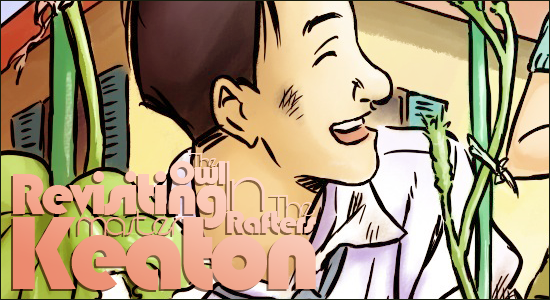
Welcome back to The Owl in the Rafters, for another week of anime reviews! I’m taking a week away from my normal schtick to revisit one particular work of one of my favorite authors, Naoki Urasawa. 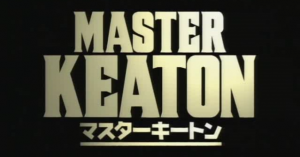 Some of you may recall that in August of 2010, I did a review on the collective works of famous manga author and artist, Naoki Urasawa. In that review, I very briefly covered a manga series, and anime adaptation, titled Master Keaton, which I cited as Urasawa’s seminal work. Looking back on it, I realize how little I said about the story itself, and I feel ashamed to have skimmed over what may easily be my favorite Naoki Urasawa title. So, in an attempt to rectify this oversight, I’d like to take this week to highlight a list of must watch episodes of Master Keaton.
Some of you may recall that in August of 2010, I did a review on the collective works of famous manga author and artist, Naoki Urasawa. In that review, I very briefly covered a manga series, and anime adaptation, titled Master Keaton, which I cited as Urasawa’s seminal work. Looking back on it, I realize how little I said about the story itself, and I feel ashamed to have skimmed over what may easily be my favorite Naoki Urasawa title. So, in an attempt to rectify this oversight, I’d like to take this week to highlight a list of must watch episodes of Master Keaton.
Now, I could briefly go over the history behind the Master Keaton manga and the anime, and the impact t had on the manga industry and Urasawa’s personal work, but I’d mostly be repeating myself, so instead I’ll just direct you to my previous article, where you can go to read up more on the author. For now, I’d like to move us along to something a little fresher. (Or at least as fresh as 2003 can get, I suppose…)
I must make a personal confession that I can be a bit of a snob when it comes to the American anime market. I’m usually one of the first to jump on companies and dubbers for every little thing like sloppy translations, mispronunciations, poor localization attempts, unnecessary script rewrites, jokes and entire allegories with meanings lost in translation, and of course lack luster dub performances. Famous for some of the most memorable for some of the best and worst anime dubs from the 80s and 90s –Ranma 1/2, Dragon Ball and Dragon Ball Z, Ronin Warriors, the Fatal Fury movies, and Gundam Wing among many, many others- is none other than The Ocean Group.
While Ocean Group is somewhat notorious for producing some of what have become the quintessential 90s dubbed anime in all their contemporary glory and yet dated failure, I was genuinely surprised to know that when they dubbed Master Keaton for the American DVD release in 2003, they did a spectacular job. Admittedly, on a purely technical level it is far from perfect as some of the attempts at various European accents come off as either drastically over or underplayed, and on some small occasion the performances can even seem a little lack luster, but the overall mood that comes as the end result is just so charming and indeed blissfully nostalgic that I can’t really bring myself to begrudge anyone for it. It is one of few series that I will actually prefer to watch in English over the original Japanese, right along side Cowboy Bebop.
The obvious starting point is episode 1, titled, Man in a Maze. This first episode, I must confess, is not really a favorite in terms of the story itself, but as any good first episode, it succeeds in giving a broad view of just who Taichi Hiraga Keaton is, and what he does. The episode starts with Keaton teaching a college anthropology class where we’re given a memorable quote:
“In ancient times game of combat such as wrestling took place. The warriors were regarded as sacred. Furthermore the act of betting on the winner was also considered sacred: this is the origin of gambling, which has since branched out into recreation and business. The business of betting on whether a policy holder survives within a certain time frame: the origin of life insurance.“
In the first 3 minutes alone we’re told a handful of basic facts about the mild mannered hero: he is a college professor, he has a reputation for canceling classes, a history of moving between homes, unhappy with his pay checks as a teacher, and most importantly he is involved with the insurance and reinsurance market known as Loyd’s of London.
As an insurance investigator for Loyd’s, Keaton is sent off to Greece to investigate the suspicious circumstances surrounding the death of Leon Papas, a retired mercenary soldier known for his love of ancient relics, namely those he drew up from the water while diving in the Aegean Sea. Aside from the generally unnatural manner that Leon fell to his death, it comes across as strange that the late Leon Papas left all his belongings to Ox Art Company, and nothing to his lover, Sophia. In Keaton’s investigation of the dead man’s lover, he quickly uncovers the truth, that the man set to inherit all of Leon’s belongings, Ox Bayear, had been extorting Leon for his findings, but when Leon found a certain treasure that he couldn’t bring himself to hand over to Ox, he was killed over it.
The story takes its time detailing some history of the characters Leon Papas, and Ox Bayear, and their involvement in the military conflicts in the West Sahara, specifically in Morocco, where there are known to be many ancient Roman ruins. The background drags on for a bit before coming to a sudden climax where Keaton makes use of some MacGuyver-like ingenuity to combat Ox Bayear’s group of men armed with pistols. The story concludes itself with a slightly corny sort of history lesson, but also successfully establishes that Keaton was once a survival instructor for the British Special Air Service, or SAS, the premier special forces role model for military forces world wide: a fact that episode 2 further embellishes upon when Keaton stumbles in between a group of terrorists and a team of bounty hunters in the midsts of a hostage situation.
The next big episode that is a real must see is episode 24, entitled The Day the Op was Born. This episode takes us ten years back to when Keaton was just a struggling archeology student working as help on a dig with another university. When one of the chief professors working the dig dies in an apparent accident, an insurance investigator from Loyd’s named Daniel O’Conell is sent to investigate. Together, he and Keaton poke around the dig site until they uncover the love triangle that motivated the murder of the late professor.
The case itself is fun, but unremarkable, with another healthy dose of archaeological history thrown into it, but the whole investigation showcases Daniel’s relationship with Keaton, giving an idea of what kind of guy Daniel is and how he and Keaton get along. Once the case itself is closed and the dig canceled, Keaton finds himself out of work. Daniel remarks that had he a partner to do the leg work he never would have been forced to run around himself and, complementing Keaton’s deductive abilities, offers Keaton the job. Other than formally introducing Daniel as a reoccurring character, this episode also gives us a look at part of Keaton’s origins as an insurance investigator. In episodes following, and technically even in episodes preceding this one, Daniel shows up regularly in the background of various other stories. Sadly, he only really gets another spotlight story and more character development in episode 36.
Episode 5: Paris Under the Roof takes a step away from the action, as Master Keaton is so prone to doing, and gives us a look at Keaton’s wandering lifestyle as a part time lecturer at just another of many universities. It’s here that we are introduced to two very important figures in Keaton’s life, when Keaton’s daughter, Yuriko visits him in the final days of a job teaching at a school in Paris, France. We learn that despite his often exciting lifestyle, being thrust into the heart of danger by his job with Loyd’s, or occasionally just stumbling into the action on his time off, Keaton is far from the perfect, generic action hero. It turns out that Keaton’s young daughter does not live with him, but with his ex-wife, who left and divorced him for undisclosed reasons.
At the prompt of his daughter’s surprise visit, Keaton begins to reminisce about his days as a promising young student of archeology and the professor who inspired and supported him most when he nearly failed out of university while trying to cope with his divorce. The story dances around various archaeological and anthropological concepts while Keaton spends a good half of the episode telling stories of his mentor, Professor Yuri Scott, to his daughter, Yuriko. Through those stories, Keaton rediscovers the passion for learning that his professor once instilled in him and reveals to his daughter that the professor who inspired him is his daughter Yuriko’s namesake.
Yuriko introduces an important aspect of Keaton’s character as the somewhat clumsy and bumbling father, and as a divorced husband left by his wife: a successful mathematics professor. Despite the family situation, his daughter still loves him, so the ongoing feel-good mood of the show isn’t bogged down with some stereotypically gritty and/or pessimistic view of the single father character. Yuriko goes on to be one of the show’s returning characters, and I must say that her appearances do in fact mark most of my favorite episodes. Yuriko takes the spotlight again in episode 19, and even gets an entire adventure to herself while her father is recovering from a broken leg in episode 35, which is in itself one of the more impressive episodes, when she helps an elderly Japanese tourist track down a pickpocket. Far from being a girls’-night-out kind of adventure, it has a number of exciting chase scenes and even a brief fight scene where the old Japanese woman shows off a bit of experience with naginata training.
While addressing Keaton’s family I can’t go without mentioning Keaton’s lecherous old father, Tahei Hiraga, a retired professor of zoology and yet another returning character. Like his son, Tahei divorced his wife while Keaton was young and watched his only child taken away to live with his ex-wife. Unlike Keaton however, Tahei is quick to chase a pretty piece of skirt, and on some occasion it gets him into trouble. Tahei first shows up in episode 7 when Tahei, Keaton, and Yuriko all visit the old family home in Japan. The episode revisits the Hiraga family’s history of both Keaton and Tahei’s wives leaving them and taking their children as well as the family’s memories of Tahei’s ex-wife/Taichi’s mother, Patricia Keaton.
Tahei appears again in episode 37 when Keaton leaves London to visit Japan only to find his father, Tahei, short on cash, dating yet another young girl, and taking care of a stolen bengal tiger while dodging hits by a Chinese mafia. The goofy and lovable imperfect father figure is a nice addition to Keaton’s somewhat more serious nature. His antics accompanied by his warm hearted dog, Tasuke, provide an interesting level of depth to Keaton’s own character when you take the time to consider the kind of relationship they have as father and son, and just what similarities and difference there are between the two of them .
The last of the true “must-see” episodes on my list is episode 34: The Agate Color of Time, an episode that takes Keaton back to his youth where he befriends a poor old bus driver while on summer vacation in Cornwall.  The clever old bus driver, Chris, talks with Keaton as the young boy rides the bus back and forth from his summer home and tells Keaton about what it means to be a “Master of Life”. The friendship comes to an apparent end however, when the young Keaton discovers that his clever bus driver friend is a washed up old drunk who never lived down his short comings in life.
The clever old bus driver, Chris, talks with Keaton as the young boy rides the bus back and forth from his summer home and tells Keaton about what it means to be a “Master of Life”. The friendship comes to an apparent end however, when the young Keaton discovers that his clever bus driver friend is a washed up old drunk who never lived down his short comings in life.
After a scuffle with a few of the local boys, Keaton gets dragged out onto the moors on an unexpected adventure, where the boys find themselves stranded in the dry summer moors with no water. Keaton makes do with some amateur archeology knowhow and the boys find enough water to last them through the night until they can walk home in the morning. When the local boys are faced with their parents however, they quickly turn on Keaton, blaming him for the fiasco to avoid punishment. Chris appears at the last minute however and defends Keaton’s good name before taking him home to his grandmother’s summer cottage. Moving back to the present time, Keaton finishes telling the story of Chris to his daughter Yuriko and comments that he himself is far from being a “Master of Life”; a humbling comment from our beloved hero.
Now, I did say that would be the last on the list of must watch episodes, but while I’m at it I figure I’ll throw in a list of personal favorites as well. Two big episodes that belong on this would be episodes 35, which I already mentioned while going over Yuriko’s debut and spotlight episodes, and the second would be…
Although it has less to do with Keaton himself, I do think episode 20 is worth mention. On a visit to the hotel of an old friend from the SAS who has recently passed away, Keaton and the hotel’s patrons get stranded on an island at high tide with the members of a Polish mafia. Keaton doesn’t actually do anything particularly spectacular in this episode, but among the supporting cast for this episode is a filthy old drunk named Foster, a leech and a friend of the late SAS officer who owned the hotel, and one of my favorite characters. Among the other captives is a young man named Eric, the son of Keaton’s late friend, a serving member of the British army intent on becoming a valiant soldier in the SAS himself one day. Feeling heroic, Eric decides that he and Keaton should take matters into their own hands and take down the mafia members themselves. Keaton and Eric get separated however and Eric is left with the old drunk, who continually bad mouths the young man’s full-hearty bravery while making sure not to risk his own life. When Eric tries to accuse Foster of being nothing but a selfish coward, the slimy old drunk replies saying,
“Of course [I’m afraid to die], I’m a coward after all. I’ve seen all kinds of brave men, but bravery didn’t save their lives. One by one, I watched the brave ones die, but I’m still alive. I’m alive now, because I’m a coward… Life is for the living. Remember that.”
While I’m on the subject of memorable supporting cast members, episode 10 introduces the character, Charlie, after whom the particular episode is named. Charlie Chapman, is a famous private detective with a bit of an ego and an old acquaintance of Keaton’s. 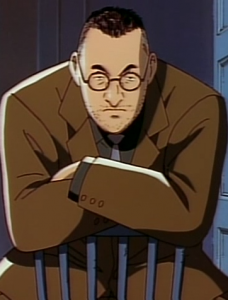 As childhood friends, Charlie and Keaton have had something of a rivalry between them -something that Charlie seems to have never quite forgotten- so when Keaton’s work with Loyds brings him to investigate a murder case that Charlie seems to have resolved, their old rivalry gets drudged back up as Keaton starts poking holes in Charlie’s case. The episode includes a few flashbacks of Charlie and Keaton’s childhood together, and gives a lot of attention to developing Charlie as a character, with the whole story ending on a comical note. Charlie returns in episode 17: The Mansion of Roses, a title that may seem eerily familiar to fans of Monster. Here, Keaton finds Charlie playing bodyguard to a young widower named Flora after her husband is brutally stabbed to death with a pair of pruning sheers. The hero and Charlie bumps heads once again when Keaton is put on the case by Loyd’s to report on the murder.
As childhood friends, Charlie and Keaton have had something of a rivalry between them -something that Charlie seems to have never quite forgotten- so when Keaton’s work with Loyds brings him to investigate a murder case that Charlie seems to have resolved, their old rivalry gets drudged back up as Keaton starts poking holes in Charlie’s case. The episode includes a few flashbacks of Charlie and Keaton’s childhood together, and gives a lot of attention to developing Charlie as a character, with the whole story ending on a comical note. Charlie returns in episode 17: The Mansion of Roses, a title that may seem eerily familiar to fans of Monster. Here, Keaton finds Charlie playing bodyguard to a young widower named Flora after her husband is brutally stabbed to death with a pair of pruning sheers. The hero and Charlie bumps heads once again when Keaton is put on the case by Loyd’s to report on the murder.
Getting back to personal favorites, episode 29: The Forbidden Fruit where Keaton appears to stumble absentmindedly into a dinner party between the executive members of a large, successful accounting firm is a great little mystery.  One particular member of the executive board of the firm seems up to no good, until Keaton begins poking his nose around and eventually reveals, much to the entire party’s shock, that his finding his way into that evening’s dinner party was no accident, but in fact a matter of business. In a wonderful display of some classic armchair detective work, Keaton breaks open a case of corporate serial murders that have been under wraps for the past ten years. The case seems to take an unexpected twist, just before the episode comes to a sudden and somewhat unexpected end.
One particular member of the executive board of the firm seems up to no good, until Keaton begins poking his nose around and eventually reveals, much to the entire party’s shock, that his finding his way into that evening’s dinner party was no accident, but in fact a matter of business. In a wonderful display of some classic armchair detective work, Keaton breaks open a case of corporate serial murders that have been under wraps for the past ten years. The case seems to take an unexpected twist, just before the episode comes to a sudden and somewhat unexpected end.
Another great story takes place in episode 30: The Highlands in Your Eyes where the episode starts with Keaton on the run from a gang with an old man in tow. The two are quickly captured and we learn that the old man is a talented painter being exploited by an art forgery operation.  With his leg broken in the first failed escape attempt, Keaton has no choice but to take his time planning the next escape. In the meantime the artist, Douglas, tells Keaton about just how he came to be involved with the gang as a forger of great classical artwork. While Keaton and Douglas prepare to make another daring escape, the head of the counterfeiting operation recognizes Keaton as the Loyd’s agent behind another art forgery bust and decides not to take any chances. The escape nearly ends in deadly failure when the gang boss is waiting for Keaton with a shotgun in hand, but in a truly gratifying moment, we get to watch as the exploited artist, Douglas takes the final swing at the gang member before he and Keaton make off into the night with the gang’s hideout left in flames.
With his leg broken in the first failed escape attempt, Keaton has no choice but to take his time planning the next escape. In the meantime the artist, Douglas, tells Keaton about just how he came to be involved with the gang as a forger of great classical artwork. While Keaton and Douglas prepare to make another daring escape, the head of the counterfeiting operation recognizes Keaton as the Loyd’s agent behind another art forgery bust and decides not to take any chances. The escape nearly ends in deadly failure when the gang boss is waiting for Keaton with a shotgun in hand, but in a truly gratifying moment, we get to watch as the exploited artist, Douglas takes the final swing at the gang member before he and Keaton make off into the night with the gang’s hideout left in flames.
Finally, the last of my personal favorites is the two part story spanning over episodes 38 and 39: Hunting Season, the last two episodes of the series. When Keaton gets involved with a case of serial murders tied to the heart of a London drug ring, he finds himself chasing after a deadly assassin hell bent on revenge and embroiled in a vendetta against the Corsican mafia. The two episode finale takes a lot of time to go over the history of the assassin, his military service with the SAS, the circumstances of his military dismissal, the details of how his family life fell apart, and how his only daughter succumbed to a heroin addiction.
Other than just piling on the drama though, these last two episode make a point of ending the series with a particularly action-packed and suspenseful bang. The climax of the two-part adventure brings Keaton face-to-face with his former SAS combat instructor, James Wolf, a man once known as “The Professor” a specialist in the art of European fencing and a soldier once known for his chivalry and benevolence, and together the two of them raid a mafia hide out to rescue a hostage.
As Naoki Urasawa’s seminal work, Master Keaton really does showcase all those sensational features that resurface in all of Urasawa’s later works. It combines elements of drama and art direction iconic of American live-action film with Urasawa’s own love of world history, his modest art style, and his endearing character writing. At this point I can only begin to summarize Master Keaton as something like a fusion of Indiana Jones, Angus MacGyver, and Father Brown. It really is a marvelously entertaining series that avoids nearly all of the painfully commonplace downfalls of mainstream anime. Whether you’re a 80s/90s kid or not, Master Keaton really is the sort of fascinating departure from the cliches of anime and manga worth checking out, regardless of your normal tastes.



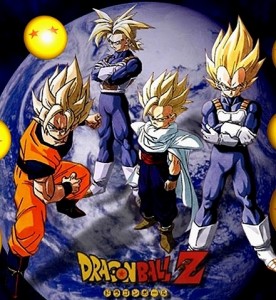


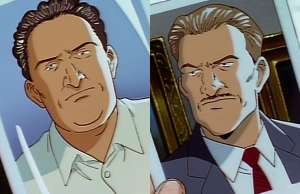
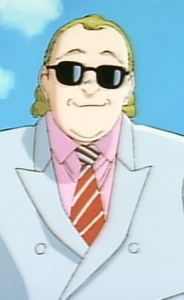
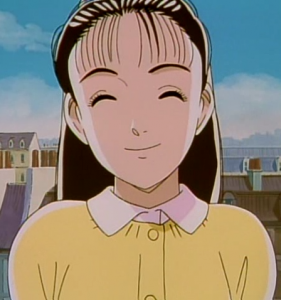

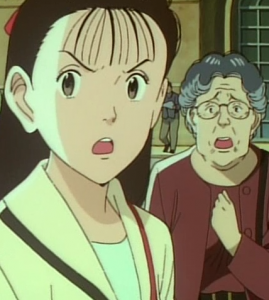
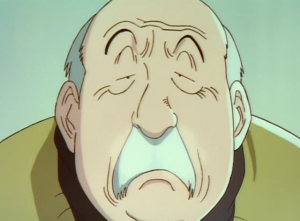
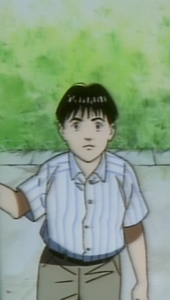
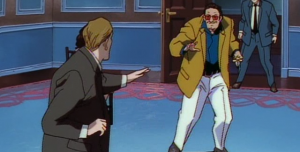
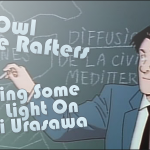

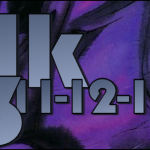
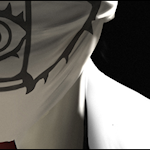









The art style looks similar to Monster or rather it does to me.
For good reason, too. Other than the fact that they are both based on manga series by Naoki Urasawa, they were both animated by Madhouse studio with Kojiima Masayuki as director.
Yeah I had to look it up because I was curious.
You have turned me into a fan without even trying. Keaton is a great series.
Sounds like an interesting premise. I’ll have to check some of these episodes out sometime.